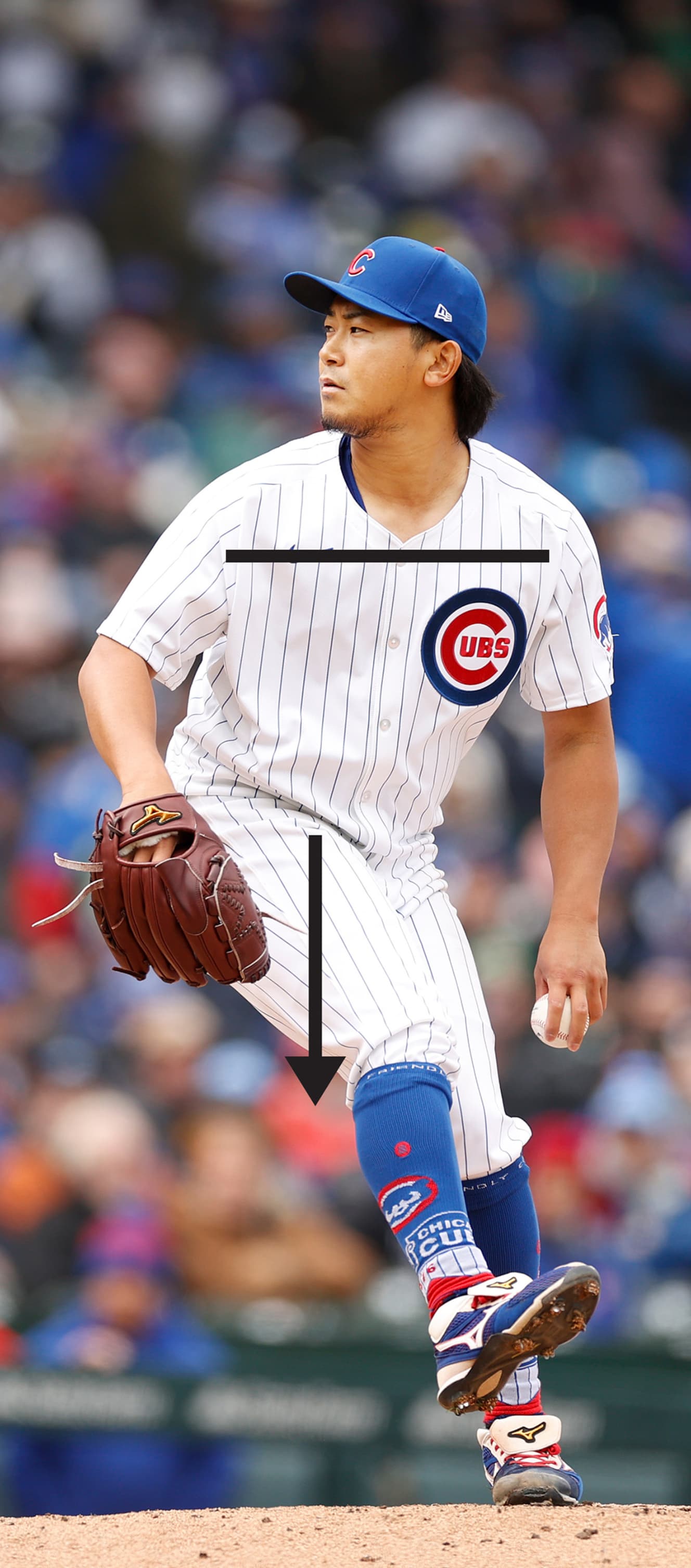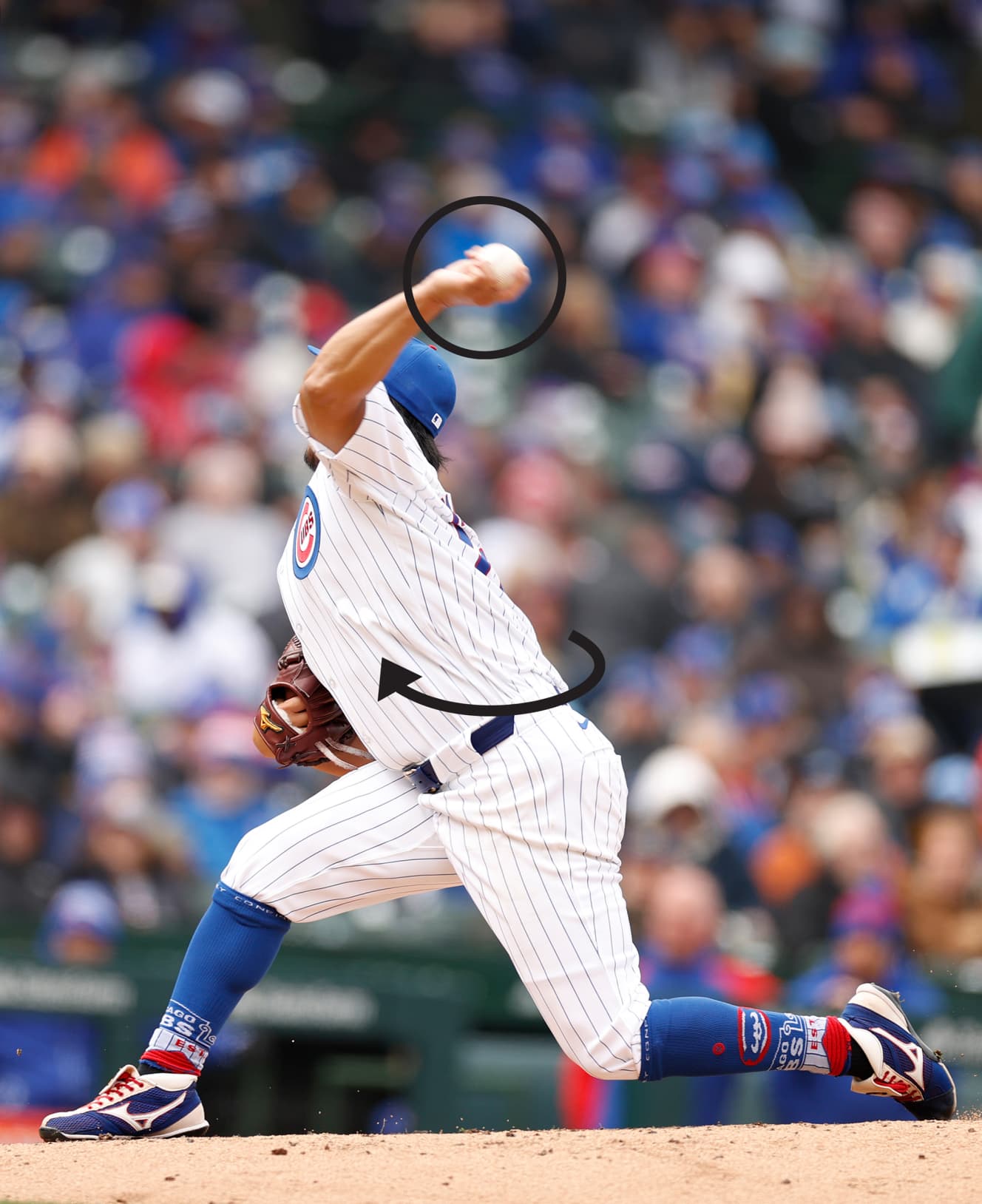Cubs’ Shota Imanaga Unveils the Power of Rotational Spin Pitching Technique
Shohei Ohtani also struck out. Shota Imanaga pitched 15 1/3 innings in three major league games with a 0.00 earned-run average!

The pitching of the Warriors continues.
It is Shota Konaga (30), playing for the Cubs from this season. He has pitched 15 1/3 innings in three major league games with a 0.00 earned run average (results as of April 16). He is the fifth pitcher since 1913, the year that defensive records were established, to pitch more than four innings and give up no earned runs in each of his debuts. He also struck out Shohei Ohtani, who has been in great form this season.
Takashi Kawamura, an expert in motion analysis and professor of physical education at the University of Tsukuba, analyzed the results as follows.
Taku Kawamura, a professor of physical education at Tsukuba University and an expert on motion analysis, analyzes the form as follows: “This is probably the ideal form for a small Japanese pitcher. While most American pitchers, who are larger in stature, take advantage of their height difference to throw down from above, Imanaga, who is 178 cm tall, uses the side rotation of his body to spin the ball from above when it leaves his hand. His pitching style is slightly more sideways than when he was in Japan, and he is able to utilize the centrifugal force of his arm more, which gives his 150 km/h straight ball a lift and sharpness that allows him to get strikeouts.
Let’s listen to Kawamura’s commentary while looking at a series of pictures of left-handed pitcher Imanaga’s pitches.
In (1), his weight is firmly on his left leg and his right knee is up to his stomach. This is probably due to the training of the hip joint. There are few pitchers, even in the majors, who can start the pitch with such stability.
The highlight is from (2) to (3).
He “sinks his body down and smoothly transfers his weight from his left leg to his right leg. What amazes me is that the line of both shoulders is parallel to the ground all the way down without blurring. Normally, the right shoulder would be thrust forward, but this is probably due to the stable starting position of his pitching form. In (3), the left hand holding the ball is in the direction of the back because the body remains toward second base. From the batter’s point of view, it is difficult to hit the ball because he cannot see it easily.”


In ④, the lateral twist of the body adds power to the ball.
By rotating the hips widely, the entire body is gaining momentum. He steps his right leg firmly in the direction of the batter and throws a ball with good spin. This is a rare type of pitching in the U.S., and even the best hitters in the Majors have had trouble with balls that float high and strike out. If I had to name a pitcher who is similar, it would be Hader, the Astros’ guardian and sidearm thrower who boasts an astonishing strikeout rate (about 15 per nine innings).

The finish line (5) shows the problem.
The body is bent in an inverted “U” shape, and the buttocks are left at second base. It is not a smooth movement, and it is not good for the shoulders and elbows. Imanaga has been prone to breakdowns since he was in Japan, and he has had only a few seasons of success throughout the year. He needs to work on modifying his form to be less stressful on his body. On the other hand, as long as he doesn’t get injured, he can definitely play in the Majors. He should be able to win 15 games a year.

After the game against the Mariners, in which he earned his second win, Imanaga regretted giving up his first walk of the season and said, “I should be thankful that I can reflect on this after winning. The “pitching philosopher,” who is always thinking, has come up with a “rotational spin pitching technique” to toy with the best hitters in the Majors.
From the May 3, 2024 issue of FRIDAY
PHOTO: Taguchi Yuji